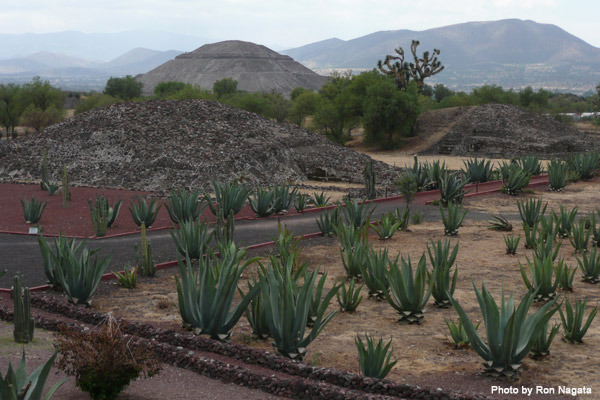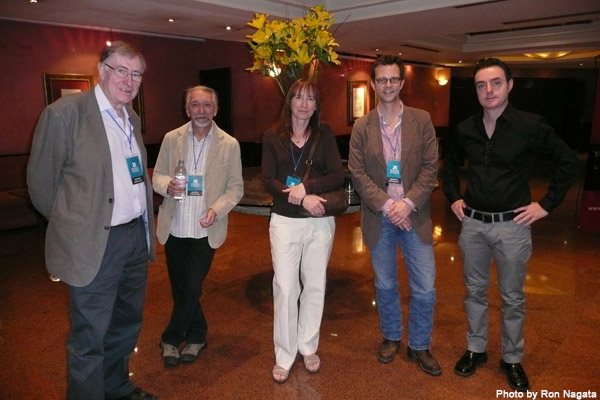Teotihuacan
Friday, March 27th, 2009On our Wednesday in Mexico City I wasn’t scheduled for any activities with the festival, so Ron and I booked a tour to the pyramids at Teotihuacan. There were maybe ten people on the tour, all of them from Mexico or other parts of Latin America except for us, and naturally the guide spoke Spanish.
Now, I took Spanish in high school, and a little in college, but in no sense do I speak Spanish (a fact I really do hope to remedy). So it was a fascinating exercise trying to follow what the guide was saying.
We went first to the ruins of Tlatelolco, right next door to the building where the festival’s literature track was taking place. The guide walked us around, providing extensive explanations. Panels posted at the various sites explained what we were seeing in both Spanish and English. Ron and I read these, but we also listened to the guide, and I was surprised at how much we could guess/understand about what she was saying. Full-immersion language learning does work, but it’s exhausting!
Next we headed out of the city to Teotihuacan. Traffic was no problem, and it took maybe forty minutes. We went first to a museum, and the guide explained extensively the things we were seeing, but after awhile she noticed the befuddled looks on our faces and asked if we spoke Spanish. Umm…no. So from then on she provided an English version of her explanations—and of course spoke wonderful English! As it turns out, she was a history teacher with a master’s in archaeology, and was amazingly knowledgeable. Ron and I are fairly naïve travelers; we hadn’t specifically asked for an English tour, so we didn’t really expect one…but it was wonderful to discover a bilingual guide anyway.
The pyramid complex is astonishing. For me, the most memorable part of the museum was a carved stone panel depicting an Edenic paradise – the state of Teotihuacan when it was first settled. But over-exploitation of the environment led finally to the abandonment of the city.
We entered into the complex through the Temple of Quetzalcoatl, descended a short flight of steep steps, and walked out past some smallish buildings into the vast sweep of the Avenue of the Dead, where the two great pyramids were suddenly looming overhead. Their size is astonishing, and perhaps not well captured in the photos.
From the moment we set out we were continuously offered knick-knacks and trinkets by polite but persistent sellers. We must have said no-thank-you fifty or sixty times. A small dog was on the grounds, howling, and it was a great sound effect. Also, the eagle whistles (one of which I eventually bought) added to the atmosphere.
We first climbed the Pyramid of the Moon, which is the smaller of the two and has only one flight of stairs to the platform, and no stairs to the top. Next was the Pyramid of the Sun, with several sets of stairs that we were free to climb, although we were not allowed to ascend the last stairway to the summit.
As it turns out, we were most fortunate in that we missed the spring solstice by three days. Teotihuacan is a new-age sacred site, and on Saturday there were many, many visitors, and apparently they were allowed to go all the way to the top…ah well. Ron and I were privileged to visit, and the experience will not be forgotten.

The Pyramid of the Sun as seen from the museum grounds.








